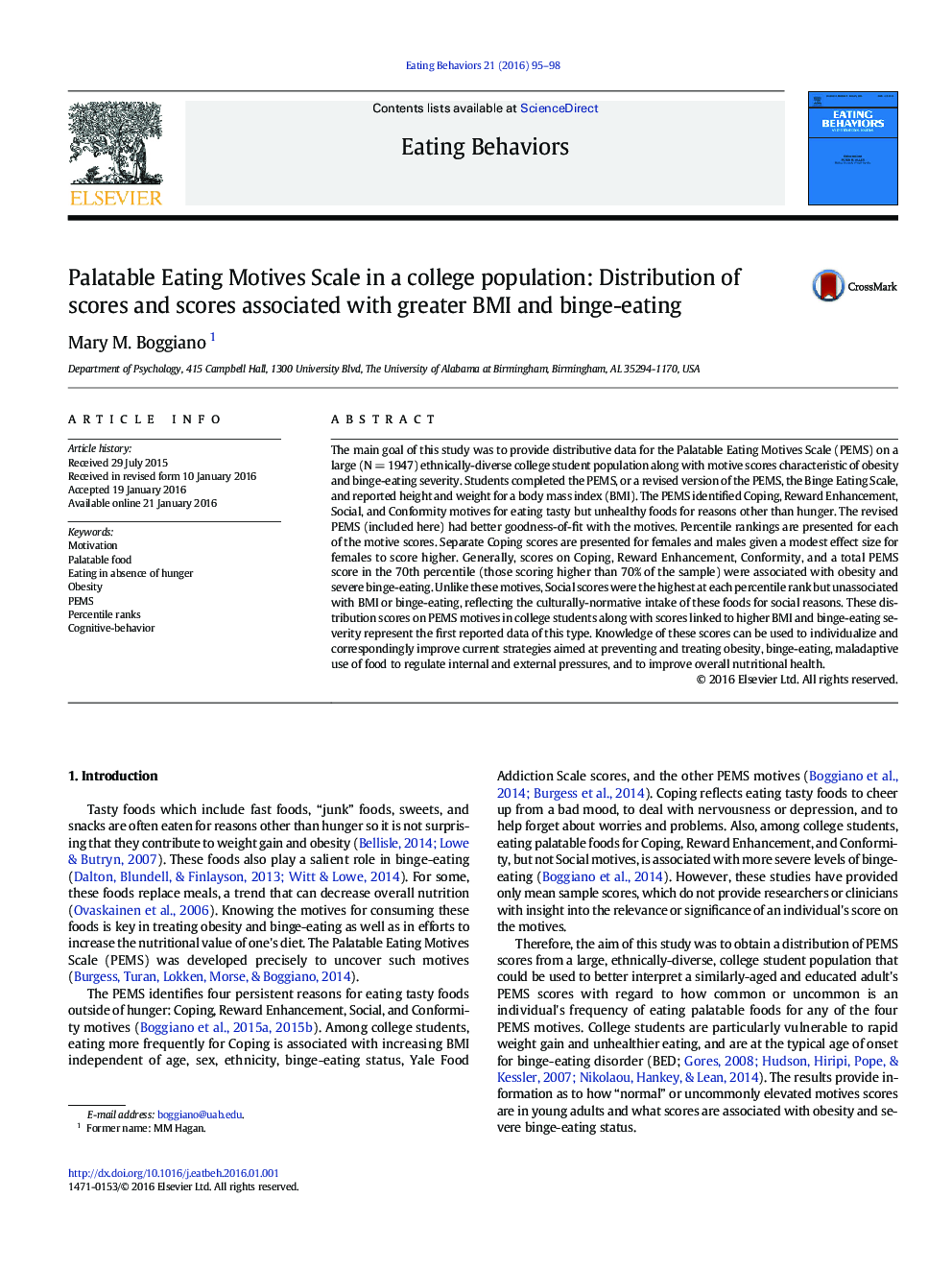| Article ID | Journal | Published Year | Pages | File Type |
|---|---|---|---|---|
| 906237 | Eating Behaviors | 2016 | 4 Pages |
•Eating palatable foods when not hungry contributes to obesity and binge-eating.•The Palatable Eating Motives Scale identifies four motives for this type of eating.•Percentile ranks of PEMS scores on 1947 college students are provided.•Scores in the 70th percentile are linked to obesity and binge-eating on 3 motives.•The score ranks can assess primary motives for more tailored health interventions.
The main goal of this study was to provide distributive data for the Palatable Eating Motives Scale (PEMS) on a large (N = 1947) ethnically-diverse college student population along with motive scores characteristic of obesity and binge-eating severity. Students completed the PEMS, or a revised version of the PEMS, the Binge Eating Scale, and reported height and weight for a body mass index (BMI). The PEMS identified Coping, Reward Enhancement, Social, and Conformity motives for eating tasty but unhealthy foods for reasons other than hunger. The revised PEMS (included here) had better goodness-of-fit with the motives. Percentile rankings are presented for each of the motive scores. Separate Coping scores are presented for females and males given a modest effect size for females to score higher. Generally, scores on Coping, Reward Enhancement, Conformity, and a total PEMS score in the 70th percentile (those scoring higher than 70% of the sample) were associated with obesity and severe binge-eating. Unlike these motives, Social scores were the highest at each percentile rank but unassociated with BMI or binge-eating, reflecting the culturally-normative intake of these foods for social reasons. These distribution scores on PEMS motives in college students along with scores linked to higher BMI and binge-eating severity represent the first reported data of this type. Knowledge of these scores can be used to individualize and correspondingly improve current strategies aimed at preventing and treating obesity, binge-eating, maladaptive use of food to regulate internal and external pressures, and to improve overall nutritional health.
